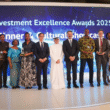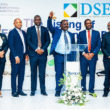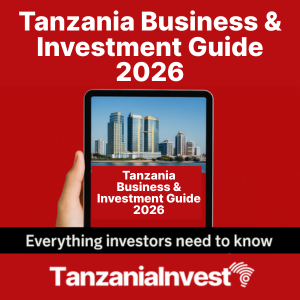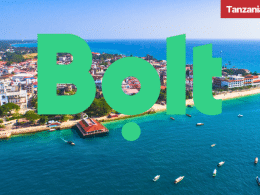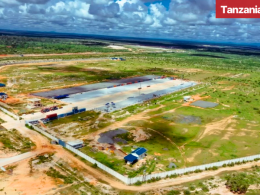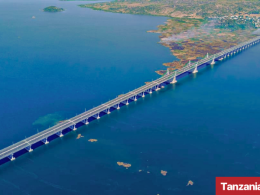TanzaniaInvest.com had the opportunity to interview Engineer Benhadard Tito Managing Director of Reli Assets Holding Company (RAHCO); and he shared with us important details about Tanzania’s Railways Industry as well as the current investment opportunities in the sector.
TanzaniaInvest.com : RAHCO was established in 2002 and become operational only in 2007 to as landlord of the railway infrastructure. What was the need for such ad-hoc institution?
Benhadard Tito : RAHCO was established by Railway Act No. 4 of 2002 and became operational in year 2007 to acquire the rail transport functions of the Tanzania Railways Corporation and such of its property, including choses-in-action, rights and liabilities transferred to it. In essence RAHCO became the landlord of the railway infrastructure and on behalf of the government, to develop, promote and to manage the railway infrastructure assets.
The need for such an ad-hoc institution was to pave way for private sector participation in provision of railway transport services.{xtypo_quote_right}The need for such an ad-hoc institution was to pave way for private sector participation in provision of railway transport services.{/xtypo_quote_right}
One of the objects of RAHCO as provided in the Railway Act No. 4 of 2002 is” to enter into agreements with other persons in order to secure the provision of rail transport services, whether by means of concession, joint venture, public private partnership or other means, and to this end delegate its own function of providing rail transport services to one or more railway operators”.
TI : How would you assess the achievements from 2007 to date?
BT : The achievements of RAHCO so far include entering Concession Agreement with Tanzania Railways Limited in September 2007 whereby TRL would provide rail transport services and pay concession fees to RAHCO. Initially TRL was owned 51% by Rail India Technical and Economic Services (RITES) of India and 41% by the Government of Tanzania (GoT). Unfortunately the performance of TRL has steadily declined resulting to GoT buying off all shares of RITES in July 2011.
Noticeable achievements of RAHCO include construction of protection works between Kilosa and Gulwe where 32 sites in a 80km stretch were seriously damaged by floods in year 2009 – 2011. Others achievements include construction of a 90m span bridge at km 293 and 2 bridges of span 30m at km 303 and km 517 in the Central Line.{xtypo_quote_left}Others achievements include construction of a 90m span bridge at km 293 and 2 bridges of span 30m at km 303 and km 517 in the Central Line.{/xtypo_quote_left}
RAHCO is also relaying 89km of track between Kitaraka and Malongwe.
TI : What are your development strategy, objectives and challenges ahead?
BT : Development strategy is geared towards enabling the line to allow use of heavy locomotives for efficiency of performing rail transport services. In the short and medium term the strategy is removal of speed restrictions by relaying light rails (52.12lb/yd and 60lb/yd) with 100lb/yd and strengthening of bridges to carry weights of 25 tons/axle.
Long term strategy is upgrading of the entire network to standard gauge (i.e. 1435mm) from the current metre gauge (1000mm), strengthen the bridges to carry 25-32 tons axle load and the track to be laid with at least 120lb/yd rails on concrete sleepers.
The challenge we are facing is securing of funds for such ambitious but very necessary upgrades. We are looking for private sector investments.
TI : What is the state of the railway network in Tanzania?
BT : Tanzania Railways network is made of light rail ranging from45lb/yd to 80lb/yd on steel sleepers. Over 70% of the bridges can handle axle loads of 10-13 tons. Permissible axle loads are 13.7 tons for locomotives and 14 tons for wagons.
TI : Why is it necessary to accompany the socio-economic development of the country, with road and air transport also on the increase?
BT : Railway transport is an important mode of transport for a country the size of Tanzania and especially considering the geographical location of Tanzania. Dar Es Salaam on the eastern coast to Kigoma on the west is 1250km apart.
Railway transport is more economical than road on distances above 500km. Tanzania is neighbor to the noncoastal countries of Uganda, Rwanda, Burundi, Eastern Democratic Republic of Congo, Zambia and Malawi. These countries are more closer to the Tanzania Ports than are to the competing ports.
TI : What are the objectives in terms of railways development?
BT : The objectives in terms of railway development is to upgrade our railway line to be able to allow use of heavy locomotives and wagons in a safe, reliable and predictable manner and move the trains at speeds of 120km for freight and 160kph for passengers.
TI : The 50 year development plan. What are the challenges ahead?
BT : The 50 year development for our railway line is to upgrade the entire RAHCO network to standard gauge with capability of carrying 32 metric tons axle loads and speeds of 120kph and 160kph for freight and passenger trains respectively.
The challenges ahead of us is securing funds to implement our plans.
{xtypo_quote_right}The government is open for negotiated PPP arrangements to allow investors both local and foreign to invest in construction of the railways lines.{/xtypo_quote_right}
Rail projects in pipeline are :
Upgrade of the Central Line from Dar Es Salaam-Tabora-Isaka (980km) to standard gauge under AREMA standards, Construction of greenfield railway from Isaka-Keza-Kigali (49km) and a greenfield railway from Keza-Gitega-Musongati (197km) to same standars as Dar Es Salaam – Isaka.
Upgrade of Ruvu-Junction -Mruazi Junction (188km) andTanga-Arusha (438km) lines to standard gauge using AREMA standards, construction of a greenfield railway line from Arusha-Musoma (~667km)
Construction ofa greenfield railway line from Mtwara –Songea-Mbamba Bay railway line with spurs from Songea to Liganga and Mchuchuma (~1000km) using AREMA standards.
TI : The Tanzanian economy is expected to maintain its strong growth, combined with increasing FDI, also thanks to the uprising oil & gas industry and the healthy mining sector. On which sectors do you have the greatest expectations?
BT : As I have mentioned the biggest challenge we are confronted with in realization of above mentioned projects is sourcing of funds.The government is open for negotiated PPP arrangements to allow investors both local and foreign to invest in construction of the railways lines.
Interested investors should register themselves with the Tanzania Investment Centre for formalizing their interest.
Room for investment in Tanzania’s railway sector is vast with the following major projects open for partnership: http://tanzaniainvest.com/exchange/user/5992-rahco



